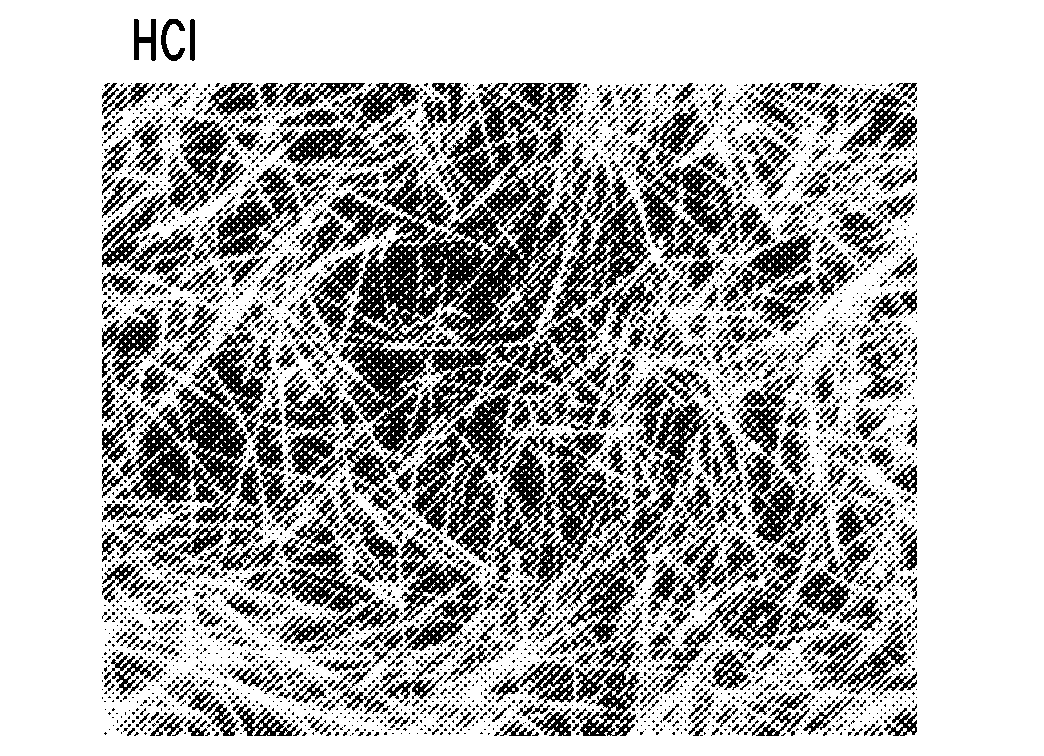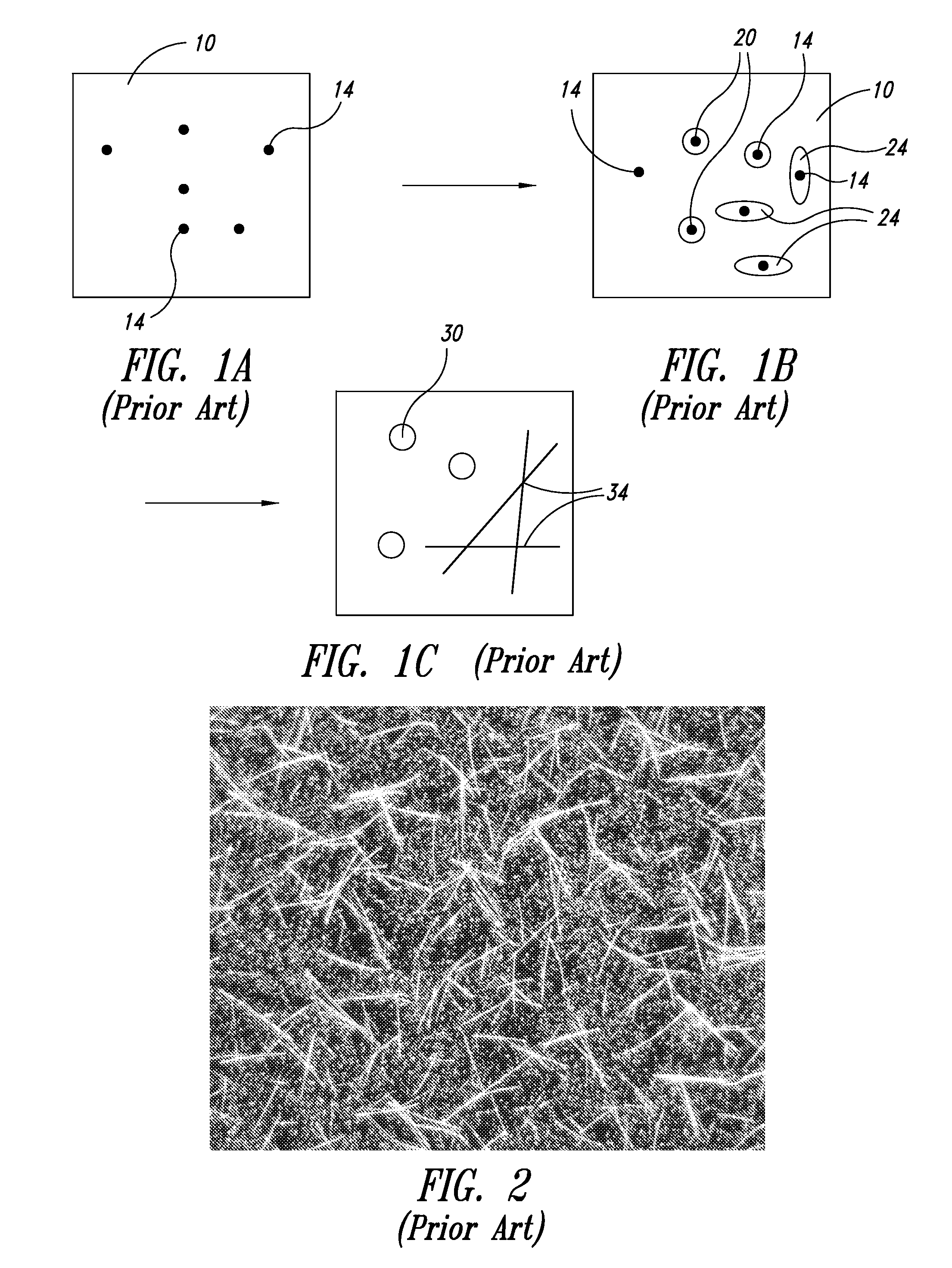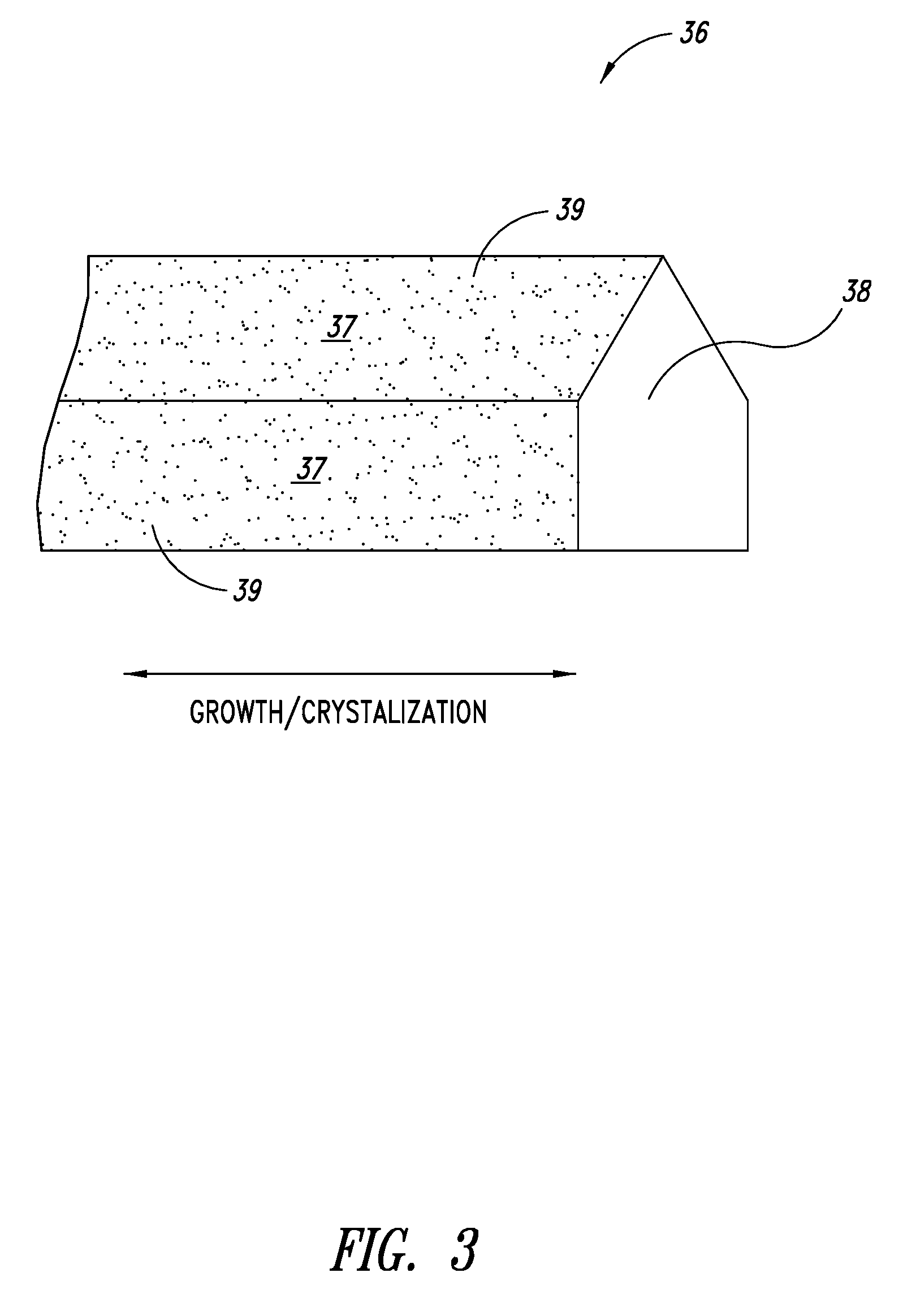Methods of controlling nanostructure formations and shapes
a nanostructure and nanostructure technology, applied in the direction of crystal growth process, polycrystalline material growth, transportation and packaging, etc., can solve the problems of mixing nanostructures of several shapes, poor process reproducibility, and mixed nanostructures
- Summary
- Abstract
- Description
- Claims
- Application Information
AI Technical Summary
Benefits of technology
Problems solved by technology
Method used
Image
Examples
example 1
Modified Polyol Process
Microscale
[0055]In a 10 ml vial, 0.5 ml solution of AgNO3 in ethylene glycol (0.1M) was combined with 0.5 ml solution of PVP in ethylene glycol (0.15M) and 0.5 ml solution of tetrabutylammonium chloride in ethylene glycol (0.001M) at room temperature (25° C.). The vial was dipped into an oil bath (190° C.) for 20-30 minutes for the reaction to complete. Grey and iridescent reaction products were obtained. Visualization under a microscope (×100 DF) indicated uniform nanowires were formed.
[0056]The reaction products were allowed to settle to the bottom of the vial and the ethylene glycol was removed. The reaction products were dried, and the reaction products were then re-suspended in 5 ml deionized water. The suspension was filtered through a glass frit (Fine, 4-6 μm, Kontes). The retentate (containing nanowires which could not filter through the frit) were dried and weighed.
[0057]Further analysis of the reaction products indicated that they were substantially ...
example 2
Without Ionic Additive
[0060]As a comparison, the reaction of Example 1 was carried out without the tetrabutylammonium chloride additive. As shown in FIG. 6, only nanoparticles were obtained.
example 3
Modified Polyol Process
Large-Scale
[0061]In a 1000 ml flask, 4.171 g PVP (MW=50,000, 37.6 mmol), 70 mg tetrabutylammonium chloride (0.25 mmol), and 4.254 g AgNO3 (25 mmol) were mixed in 500 ml ethylene glycol). The reaction mixture was stirred at room temperature (25° C.) for 15 minutes before the flask was heated with a heating mantle set to 200° C. The internal temperature of the reaction mixture was controlled at about 150° C. Within 30 minutes, the reaction mixture has turned into a grey and iridescent suspension of silver nanowires. The silver nanowires produced had a mean diameter of 62±7 nm, and an average length of 8.5±1.9 μm. There was no precipitate or nanoparticles formed (See, e.g., FIG. 4D).
[0062]The large-scale reaction described herein was highly reproducible.
PUM
| Property | Measurement | Unit |
|---|---|---|
| Temperature | aaaaa | aaaaa |
| Temperature | aaaaa | aaaaa |
| Temperature | aaaaa | aaaaa |
Abstract
Description
Claims
Application Information
 Login to View More
Login to View More - R&D
- Intellectual Property
- Life Sciences
- Materials
- Tech Scout
- Unparalleled Data Quality
- Higher Quality Content
- 60% Fewer Hallucinations
Browse by: Latest US Patents, China's latest patents, Technical Efficacy Thesaurus, Application Domain, Technology Topic, Popular Technical Reports.
© 2025 PatSnap. All rights reserved.Legal|Privacy policy|Modern Slavery Act Transparency Statement|Sitemap|About US| Contact US: help@patsnap.com



